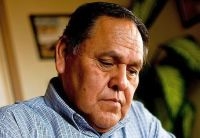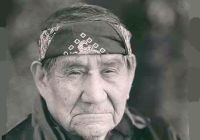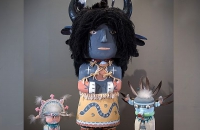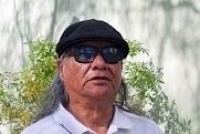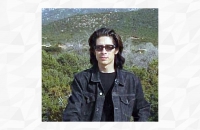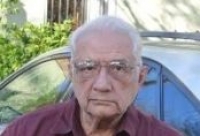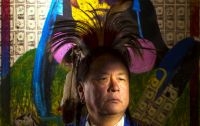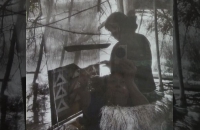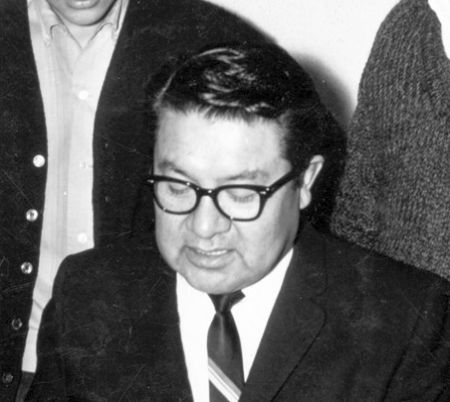
Joe Hilario Herrera (See Ru, or Blue Bird)
Joe Hilario Herrera (1921-2001) was born at Cochiti Pueblo into a rich art inheritance through his father’s pueblo of Cochiti and his mother’s pueblo of San Ildefonso and was painting before he entered the Indian School in Santa Fe. His mother, Tonita Peña (QuahAh) gave him thorough training in art techniques.
Herrera began painting beside his mother, Tonita Pena, a prominent San Ildefonso artist, when he was very young. She rewarded him with tubes of paint in return for swatting flies with a dish towel to keep them away from her easel.
Herrera admitted he was something of a rebel. He was one of the first of the Indian artists to move away from traditional representational art into the more abstract forms of self-expression. Although Herrera started working actively as a painter again after his retirement, serious eye problems that worsened in 1994 curtailed his work production.
Before Herrera began painting in abstract form, he produced the traditional representational style often referred to as the Dorothy Dunn School style, after the art teacher at the Santa Fe Indian School. According to Clara Lee Tanner, in his execution of single dance figures, there is no competitor for perfection. She stated that often he used a colored paper to complement the tones in which his subjects were painted and that he further enhanced the excellent color contrasts by doing very fine work.
At the Indian School in Santa Fe Herrera painted murals and thereafter continued to paint though he earned his livelihood by farming and auto mechanics.
It was his studies under Transcendentalist artist, Raymond Jonson, which led Herrera to explore more modern styles. Ultimately, his use of traditional symbols as elements of modern design, called Pueblo Modernism, transformed traditional Indian painting and influenced a whole generation of artists.
Joe also served as governor of Cochiti Pueblo.



